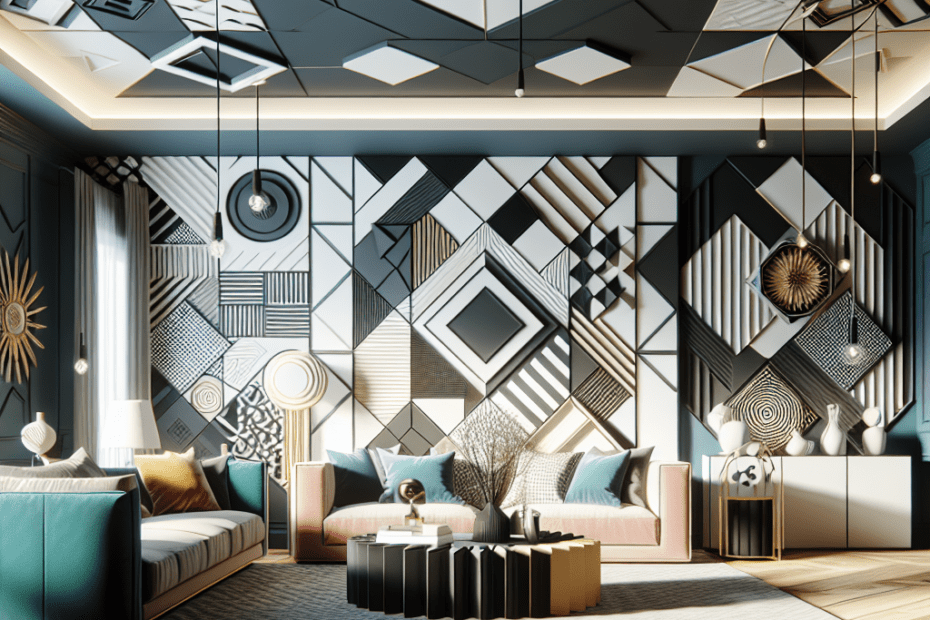Introduction
Designers today are constantly on the lookout for elements that can give their work a fresh and modern look. One such element that has been gaining popularity is geometric patterns in design. These patterns bring a sense of balance, harmony, and sophistication to any project. They can be found in various applications, from fashion and architecture to web design and interior décor.
Geometric patterns are not a new trend; they have roots in ancient art and architecture. From the intricate mosaics of ancient Greece to the symmetrical artworks of Islamic culture, geometric patterns have been used to create visual appeal and convey deep meanings. Now, they are being reimagined in contemporary designs to create spaces and products that feel modern, yet timeless.
The rise in the use of geometric patterns is supported by recent statistics. According to a report from Trend Reports, designs incorporating geometric patterns have seen a 20% increase in use over the past three years, signaling a significant shift towards this aesthetic. This growth indicates that both designers and consumers are drawn to the clean lines and modern appeal that geometric patterns provide.
The Appeal of Geometric Patterns
One of the main reasons geometric patterns are so appealing in modern design is their versatility. They can be simple or complex, bold or subtle, and can be used in a monochrome palette or with vibrant colors. This flexibility makes them suitable for a wide range of applications, ensuring that they can be tailored to fit any project or personal style.
Furthermore, geometric patterns often evoke a sense of order and structure, which can be both soothing and aesthetically pleasing. In an age where minimalist design is highly sought after, these patterns provide a way to add interest and detail without cluttering the visual space.
For instance, Scandinavian design, known for its minimalist and functional style, frequently incorporates geometric patterns to achieve a balanced look. Patterns such as chevrons, hexagons, and triangles are commonly found in textiles, wallpapers, and home accessories, perfectly blending form with function.
Applications of Geometric Patterns
Geometric patterns in design are not limited to a single industry. Here’s how they can be applied across various domains:
| Industry | Application | Example |
|---|---|---|
| Fashion | Clothing Prints | A geometric patterned dress for a bold fashion statement |
| Interior Design | Wallpapers and Rugs | A hexagonal rug adding depth to a living room |
| Architecture | Facade Designs | Geometric patterns in building facades for aesthetic appeal |
| Web Design | Backgrounds and Frames | Using geometric patterns for modern website backgrounds |
| Graphic Design | Logos and Branding | Incorporating geometric shapes into logos for striking visuals |
Creating a Modern Look with Geometric Patterns
To achieve a modern look with geometric patterns in design, it’s important to consider how these patterns interact with other design elements. Here are some tips:
- Balance Color and Shape: Use a limited color palette to ensure that the geometric patterns don’t overwhelm the design. Pairing bold shapes with neutral colors can create a sophisticated look.
- Mix and Match Patterns: Combine different patterns that share a common theme or color to create a cohesive design.
- Focus on Scale: Play with the scale of patterns to add depth and interest. Larger patterns can be used as focal points, while smaller ones can serve as background elements.
- Incorporate Texture: Add texture to the design with materials like wood, metal, or textiles that highlight the geometric patterns.
- Consider the Space: Tailor the pattern choice to the space it will occupy, ensuring it complements the surroundings rather than clashing with them.
Overall, geometric patterns offer a timeless and adaptive element that can enhance any design project’s modernity and appeal.
Key Takeaways
- Geometric patterns are a popular choice for modern design due to their versatility and aesthetic appeal.
- These patterns are used across various industries such as fashion, interior design, architecture, web design, and graphic design.
- The modern use of geometric patterns emphasizes balance, color harmony, and texture to achieve a sophisticated look.
- Recent statistics indicate a growing trend towards incorporating geometric patterns, reflecting a shift in consumer preferences.
FAQ
- 1. Why are geometric patterns so popular in design?
- Geometric patterns are popular because of their ability to provide structure and visual interest while remaining versatile enough to fit any design style.
- 2. How can one use geometric patterns effectively?
- To use geometric patterns effectively, balance color, shape, and texture, and ensure the scale suits the overall design concept.
- 3. Are geometric patterns suitable for all types of design?
- Yes, geometric patterns can be adapted for various design fields, including fashion, interior, architecture, web, and graphic design.
- 4. What are some common geometric shapes used in modern design?
- Common shapes include triangles, hexagons, circles, and chevrons, each bringing unique visual qualities to a design.
- 5. Where can I find examples of geometric pattern usage?
- Examples can be found in trend reports, design magazines, and online platforms showcasing recent design projects.
